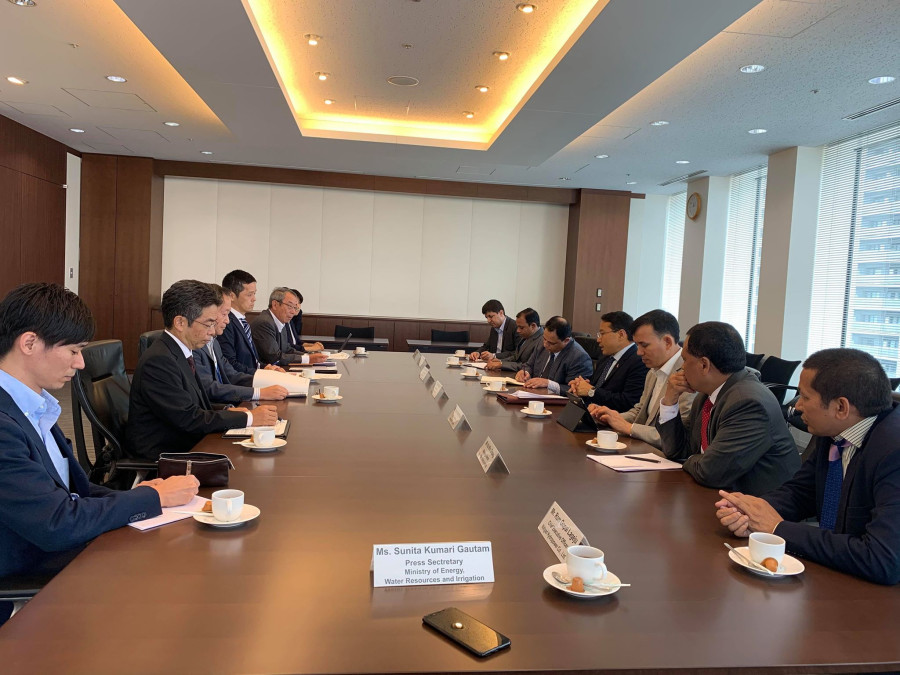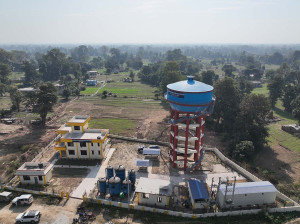Money
Japan to provide a soft loan to build Nalsing Gad Storage Project
The 410 megawatt scheme located in Jajarkot will have a 200-metre-high rock dam.
Prahlad Rijal
According to members of the Nepali delegation to the meeting led by Energy Minister Barsha Man Pun, the Japan International Cooperation Agency will fund the construction of the dam with a concessional loan. The agency has asked that a Japanese private sector company be contracted to build the powerhouse for the 410 megawatt scheme located in Jajarkot in western Nepal.
“The development agency has proposed to unbundle construction of the Nalsing Gad Storage Project with two public and private entities executing the dam and powerhouse construction respectively,” said Kulman Ghising, managing director of the Nepal Electricity Authority. “However, the two sides are yet to finalise the modality and sign an agreement.”
The headway comes a year after the Japanese development assistance institution showed its interest in funding the project identified by a 2001 survey as a scheme with high economic returns and favourable technical aspects.
The Nalsing Gad Storage Project is one of the three reservoir-type projects in the pipeline along with Budhi Gandaki and Dudh Koshi designed to offset power demand in the country during the dry season when production slackens at run-of-the-river schemes.
Currently, the state-owned power utility operates the country’s only reservoir schemes—the 60 megawatt Kulekhani and its cascade project Kulekhani II with an installed capacity of 32 megawatts.
The country still faces a power shortage during the dry season and has to depend on costly power imports. Energy officials have time and again pointed to the need to invest in storage-type projects so that the country will not need to buy electricity from India during the winter.
The power utility spent around Rs22 billion importing 653 megawatts of electricity from India to meet the shortage.
The two sides have agreed to initiate the loan process for the Nalsing Gad Storage Project after a detailed project report is finalised by energy officials.
A joint venture of SMEC/Australia-MWH/USA-Udaya Consultancy/Nepal is preparing an updated detailed project report for the storage type project estimated to cost more than Rs100 billion.
A formal agreement will be concluded after the two sides review the project report and strike a deal on the proposed public-private partnership model, officials said. The Nepali side has agreed to accord high priority to the storage scheme.
“The contractor was scheduled to submit an updated project report by May 2019, but it has asked for a deadline extension, saying that it was fine tuning the study and was close to finalising it,” said Gokarna Raj Panta, deputy spokesperson for the Energy Ministry.
The project was expected to go into construction by 2017-18 and conclude by the fiscal year 2022-23, but it was delayed by political intervention and disputes over the selection of the contractor to prepare the detailed project report.
As per a 2012 study, the project can churn out 1,406 gigawatt hours of electricity annually and 643 gigawatt hours of energy in the dry season, making it an attractive project for meeting the seasonal peak demand of the Integrated Nepal Power System and ensuring regional power system balance in the country's western grid.
The scheme will have a 200-metre-high rock dam 9 kilometres upstream from the confluence of the Nalsing Gad and Bheri rivers. The planned reservoir will inundate 315 hectares of private farmland and 489 hectares of public land including forests. The 2012 feasibility study shows that 588 households will have to be relocated.
According to Nalgad Hydropower Company, the Nalsing Gad Storage Project will cause little disruption in terms of rehabilitation and resettlement compared to other storage-type projects of a similar size because the construction site is sparsely settled, and the reservoir will only occupy a small area.
Water from the Nalsing Gad reservoir will be conveyed into an 8,215-metre-long headrace tunnel before it is channelled into four underground turbines with an installed capacity of 102.5 megawatts each.
The power generated by the Nalsing Gad plant will be evacuated through a 112-kilometre-long 400 kV transmission line with an interconnection point at Kolhapur substation.
The project's expected payback period is 12.18 years, slightly higher than that of the proposed Budhi Gandaki reservoir scheme.
Apart from talks with Japan International Cooperation Agency officials, the Nepali delegation also held an interaction with around 70 representatives of Japan's private and energy sector entities including power giants Fuji Electric and Kansai Electric Power on investing in hydropower in Nepal.
According to officials present in the interaction, Minister Pun briefed the potential investors on political stability and legal developments including regional power trade agreements and currency hedging mechanism in favour of investment in Nepal’s water resources.




 15.12°C Kathmandu
15.12°C Kathmandu















